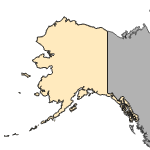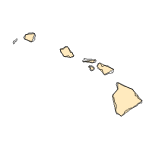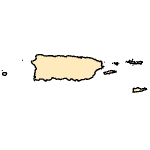Oncorhynchus masou
(cherry salmon)
Fishes
Exotic |
|
Common name: cherry salmon
Synonyms and Other Names: O. macrostomus, O. rhodorus, Salmo fomosanus, Japanese trout, masu salmon
Taxonomy: available through
www.itis.gov
Identification: Distinguishing characteristics and color photographs were given by Masuda et al. (1984). Several subspecies or forms are recognized, some of them previously considered distinct species (Masuda et al. 1984). Behnke (1962) provided a list of taxonomic characters.
Size: 78 cm FL.
Native Range: Marine and freshwaters of Japan, Korea, and Russia (Masuda et al. 1984).



|

Alaska |

Hawaii |

Puerto Rico &
Virgin Islands |

Guam Saipan |
Hydrologic Unit Codes (HUCs) Explained
Interactive maps: Point Distribution Maps
Nonindigenous Occurrences:
Table 1. States with nonindigenous occurrences, the earliest and latest observations in each state, and the tally and names of HUCs with observations†. Names and dates are hyperlinked to their relevant specimen records. The list of references for all nonindigenous occurrences of Oncorhynchus masou are found here.
Table last updated 1/16/2026
† Populations may not be currently present.
Means of Introduction: Two hundred 18-month old fingerlings were intentionally stocked in Michigan by the Michigan Department of Conservation (Parsons 1973); however, Westerman (1930) listed a total of 2,000 stocked in Michigan. Stocked in Washington for use in fisheries enhancements studies (Mighell 1978).
Status: Failed in Michigan. Presumably failed in Washington (no mention in Wydoski and Whitney 2003).
Impact of Introduction: The impacts of this species are currently unknown, as no studies have been done to determine how it has affected ecosystems in the invaded range. The absence of data does not equate to lack of effects. It does, however, mean that research is required to evaluate effects before conclusions can be made.
References: (click for full references)
Behnke, R.J. 1962. Status of the landlocked salmonid fishes of Formosa with a review of
Oncorhynchus masou. Copeia 1962(2):400-407.
Christie, W.J. 1970. Introduction of the cherry salmon Oncorhynchus masou in Algonquin Park, Ontario. Copeia 1970(2):378-379.
Courtenay, W.R., Jr., D.P. Jennings, and J.D. Williams. Exotic fishes. Appendix 2 in Common names and scientific names of fishes from the United States and Canada. 5th edition. American Fisheries Society, Bethesda, MD.
Crossman, E.J. 1984. Introduction of exotic fishes into Canada. 78-101 in W.R. Courtenay, Jr. and J. R. Stauffer, Jr., eds. Distribution, Biology and Management of Exotic Fishes. Johns Hopkins University Press, Baltimore, Maryland.
Masuda, H., K. Amaoka, C. Araga, T. Uyeno and T. Yoshino (eds.). 1984. The fishes of the Japanese Archipelago. Tokai University Press, Tokyo.
Mighell, J.L. 1978. The marine net-pen culture of cherry or masu salmon, Oncorhynchus masou, and two hybrid crosses in Puget Sound, Washington. National Marine Fisheries Service internal report. National Oceanic and Atmospheric Administration, Seattle, WA.
Parsons, J.W. 1973. History of salmon in the Great Lakes, 1850-1970. U.S. Bureau of Sport Fisheries and Wildlife Technical Paper 68.
Westerman, F.A. 1930. Fish division. 193-233 in: Fifth Biennial Report, 1929-1930. Michigan Department of Conservation.
Wydoski, R.S., and R.R. Whitney. 2003. Inland fishes of Washington. Second edition. University of Washington Press, Seattle, WA.
Author:
Pam Fuller, Leo Nico, and Matt Neilson
Revision Date: 7/25/2012
Peer Review Date: 7/25/2012
Citation Information:
Pam Fuller, Leo Nico, and Matt Neilson, 2026, Oncorhynchus masou (Brevoort, 1856): U.S. Geological Survey, Nonindigenous Aquatic Species Database, Gainesville, FL, https://nas.er.usgs.gov/queries/FactSheet.aspx?speciesID=909, Revision Date: 7/25/2012, Peer Review Date: 7/25/2012, Access Date: 1/16/2026
This information is preliminary or provisional and is subject to revision. It is being provided to meet the need for timely best science. The information has not received final approval by the U.S. Geological Survey (USGS) and is provided on the condition that neither the USGS nor the U.S. Government shall be held liable for any damages resulting from the authorized or unauthorized use of the information.